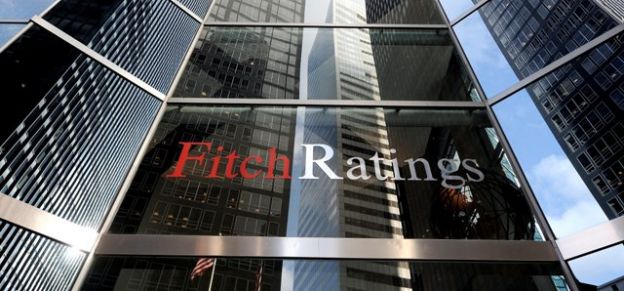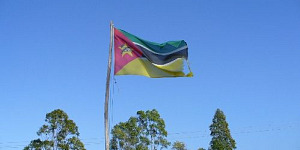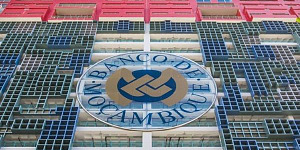Fitch Ratings has downgraded Mozambique's Long-term foreign and local currency Issuer Default Ratings (IDRs) to 'CCC' from 'B'. Fitch has also downgraded the Country Ceiling to 'B-' from 'B' and the Short-term IDR to 'C' from 'B'.
KEY RATING DRIVERS
The downgrade of Mozambique's IDRs reflects the following key rating drivers and their relative weights:
HIGH
Mozambique's public debt profile has deteriorated sharply following the disclosure of additional state-guaranteed debt, which had previously been excluded from official statistics. The terms of the loans are yet to be fully disclosed, including the extent to which cross-default clauses could precipitate a credit event. However, it is certain that their commercial nature will lead to a worsening of the country's debt-servicing schedule and sustainability, which until recently Fitch considered favourable given the large share of concessional lending.
According to the IMF, this debt to opaque state-owned enterprises amounts to at least USD1bn, around 6.3% of GDP in 2013 (the year it was incurred). We have re-estimated our general government debt figures accordingly, with the ratio of GGGD/GDP now standing at 83.3% at end-2015. This compares with 73.3% stated in our most recent rating action commentary (21 March 2016) and 54.4% for the 'B' median. Fitch now estimates that 88% of total public debt is foreign currency denominated (versus 69.1% for the 'B' median), raising risks to debt sustainability. Our expectations of a further weakening of the metical in 2016 are likely to push public debt/GDP to over 100% in 2016, the highest figure in 15 years and compared with only 37.8% in 2011.
The lack of transparency from the government in disclosing the loans highlights weaknesses in both governance standards and the policy framework and has also worsened relations with donors, who provide around 9% of GDP in grants and loans per year. In this context, the outcome of current negotiations with the IMF, which has put on hold its standby credit facility (SCF) programme agreed in December 2015, will be crucial to determine the macroeconomic impact of recent developments. Although a complete halt of IMF assistance is highly unlikely, the Fund is likely to demand much more stringent public finance management and fiscal targets to continue making disbursements under the SCF. Given the country's very limited financing options, any delays in restoring trust with donors would risk increasing fiscal, external and exchange rate instability.
MEDIUM
Recent figures from the Central Bank of Mozambique point to a worse than expected weakening of the country's external position in 2015. The trade balance deteriorated sharply as exports continued to struggle while imports contracted by only 5%, highlighting the country's limited import-substitution capacity. Foreign direct investment (FDI; traditionally the main source of funding for the current account deficit) fell by 24% in 2015, as large resource extraction projects reached completion. Uncertainty over the timeframe of liquid natural gas (LNG) projects and downside risk to FDI amidst the recent deterioration in macro-stability could increase pressure on Mozambique's weak foreign exchange (FX) reserves position in 2016-17. Fitch now forecasts FX reserves coverage (in terms of current external payments) at only 2.3 months in 2016, the weakest level in two decades.
Inflation has started to accelerate rapidly, reaching a five-year high of 13.6% in March. This reflects supply side constraints (adverse weather has affected food production) and the depreciation of the metical against the US dollar (13% since December 2015) and the South African rand (13.5%). Higher prices have forced the Mozambican Central Bank to lift its main interest rate by 525 basis points since September 2015. Further monetary tightening is likely in the short term, hindering growth. Any adverse developments from the current problems with creditors could put even more downward pressure on the metical, resulting in potentially higher inflation and a more challenging policy scenario.
Mozambique's CCC IDRs also reflects the following key rating drivers:
Medium-term economic prospects remain positive and are a key rating strength. Although growth is expected to slow in 2016, in line with fiscal contraction and higher inflation, we expect it to remain close to 5%, above the 'B' median of 4.3%. GDP growth should accelerate from 2017 onwards, on the back of reduced macroeconomic instability and a recovery in exports. Key infrastructure projects, such as the Nakala railway and port terminals have been completed and could help lift coal exports (as well as FX reserves) significantly over the next two years, especially if commodity prices recover. However, important downside risks remain, including extended drought, further adverse policy developments and the cancellation of LNG projects.
Mozambique's banking sector continued to enjoy a strong performance in 2015, despite mounting macroeconomic challenges. The system's return on equity averaged 20%, while capital adequacy stood above 16%. There has been a deterioration in terms of delinquent loans, but at 4.3% at end-2015, NPLs are still moderate and well provisioned. Importantly, banks' FX exposure is less pronounced than in other countries in the region, with FX lending and deposits comprising 22% and 35% of their respective portfolios at end-2015. Moreover, most credit in FX is directed to companies with access to US dollars, reflecting macro-prudential measures (ie. extra provisioning requirements) that de-incentivise such lending.
The country has some of the weakest structural features of speculative grade sovereigns. Per capita income stood at USD550 in 2017, only 15% of the 'B' median and the lowest figure of all rated sovereigns. Human development indicators are also well below the 'B' median. As highlighted by recent events, institutional factors such as transparency and data quality are very weak and a major constraint on the rating.
RATING SENSITIVITIES
The main factors that could lead to a downgrade are:
-Confirmation of an imminent or actual credit event including the non-payment of sovereign-guaranteed debt obligations or the announcement of a debt restructuring that we regard as a Distressed Debt Exchange.
The following factors could lead to an upgrade:
- Evidence of effective resolution of potential default risks from the newly discovered debt.
- Normalisation of donor support relationships.
-Fiscal consolidation that leads to a decline in government debt/GDP.
-A recovery in commodity prices that reduces external pressures and helps restore foreign exchange reserve coverage.
-Increased confidence in the development of natural resource sectors leading to a stronger external position.
KEY ASSUMPTIONS
Fitch assumes Brent oil prices to average USD35/bl in 2016 and USD45/bl by 2017.
Despite an uptick in violence in northern regions of Mozambique, Fitch assumes that political stability will be maintained given that the ruling Frelimo party controls all government institutions.






















































